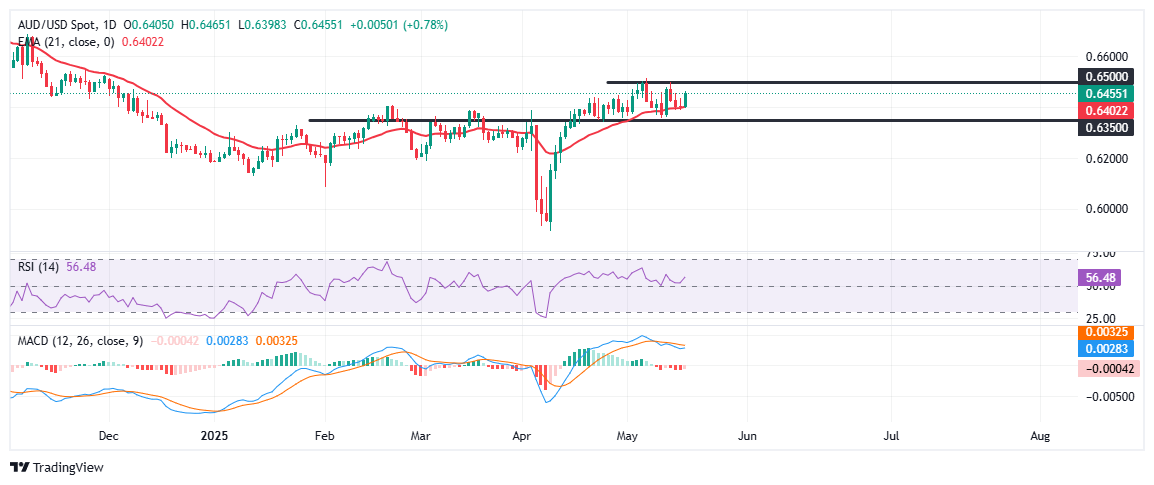AUD/USD eyes 0.6500 hurdle as US Dollar weakens, RBA decision looms
- AUD/USD trades near 0.6455, up 0.80% on the day amid broad US Dollar weakness.
- Moody’s downgrade of the US credit rating weighs on the Greenback.
- RBA expected to cut rates by 25bps on Tuesday, market focus on guidance amid resilient domestic data.
The Australian Dollar (AUD) extends its rebound against the US Dollar (USD) on Monday, with AUD/USD climbing to 0.6455, trimming recent losses as sentiment turns against the Greenback. The move comes after Moody’s Rating downgraded the US long-term sovereign rating from “Aaa” to “Aa1,” citing mounting fiscal challenges and a $36 trillion debt load. Although the agency assigned a “Stable” outlook, the downgrade triggered renewed weakness in the US Dollar, pushing the US Dollar Index (DXY) near the key 100.00 mark.
Meanwhile, the focus shifts to Tuesday’s Reserve Bank of Australia (RBA) policy decision. There is strong consensus across financial markets and major banks that the RBA will lower the Official Cash Rate (OCR) by 25 basis points, from 4.10% to 3.85%. Analysts at ANZ, Commonwealth Bank, and Westpac support this view. However, National Australia Bank (NAB) has taken a more aggressive stance, forecasting a 50 basis point cut. Some economists have even floated the possibility of a 35 basis point reduction to realign the rate with a standard quarter-point level. A Reuters poll shows a near-unanimous forecast for a 25 basis point cut.
However, upbeat Australian labor market data and improving US-China trade sentiment have tempered expectations for an aggressive easing cycle.
Technical Analysis: AUD/USD eyes breakout above key resistance
From a technical standpoint, AUD/USD is approaching the 0.6500 psychological resistance zone, which has capped the pair’s upside multiple times in May. A daily close above this barrier would open the door to further gains toward 0.6600, a level not seen since November.
The pair remains supported by the 21-day Exponential Moving Average (EMA) at 0.6402, reinforcing the bullish short-term bias. The Relative Strength Index (RSI) at 56.69 shows modest upward momentum, while the Moving Average Convergence Divergence (MACD) continues to hover in positive territory, although momentum is flattening.
On the downside, key support is seen at 0.6400, marked by the 21-day Exponential Moving Average (EMA), followed by a stronger floor at 0.6350. The near-term bias remains cautiously bullish as long as the pair holds above the 0.6400 support zone.


